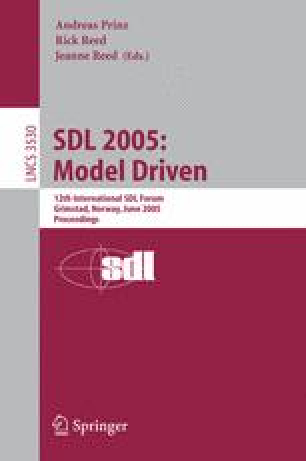
SDL 2005: Model Driven
Publication year: 2005
: 978-3-540-31539-1
This paradigm is based on the following important principles of distributed - plications: Communication: large systems tend to be described using smaller parts that communicate with each other; State: the systems are described on the basis of an explicit notion of state; State change: the behavior of the system is described in terms of (local) changes of the state. The original language is not the only representative for this kind of paradigm, so the scope of the SDL Forum was extended quite soon after the ?rst few events to also include other ITU standardized languages of the same family, such as MSC, ASN.1 and TTCN. This led to the current scope of System Design Languages coveringallstagesofthedevelopmentprocessincludinginparticularSDL,MSC, UML, ASN.1, eODL, TTCN, and URN. The focus is clearly on the advantages to users, and how to get from these languages the same advantage given by the ITU Speci?cation and Description Language: code generation from high-level speci?cations.
: Computer Science, CORBA, MSC (message sequence charts), SDL (specification and description language), UML, Unified Modeling Language (UML), architecture, description languages, formal language, modeling, petri net, requirements engineering, semantics and analysis of scenario notations, software engineering, software testing, systems modeling